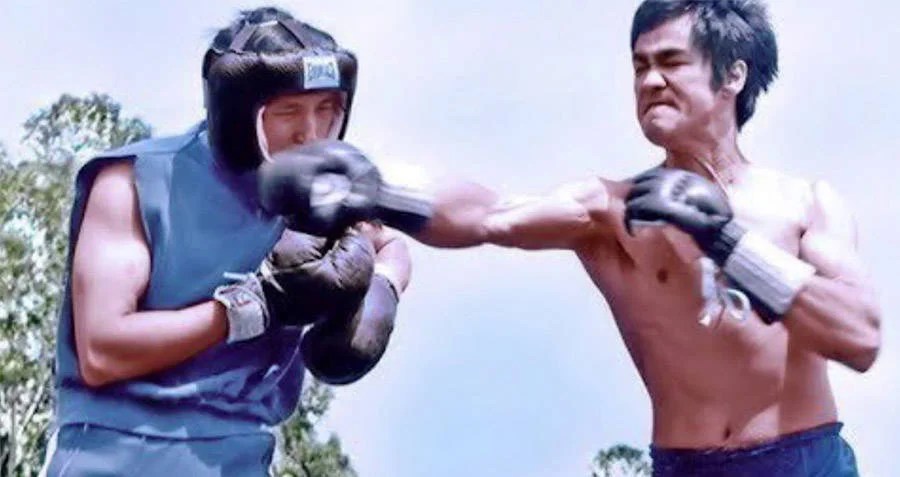
Bruce Lee was a pioneer of his time, but not the first to realise that there is more to learning martial arts than the system that teaches you.
In the latest Biography Bruce Lee: A Life Matthew Polly writes that Bruce was capable of learning and executing a form in mere minutes, and to do so with a very high standard.
He is famous for having practiced Wing Chun, showing himself to be diligent in practicing movements over and over again, and was a stickler for perfection during movie shoots.
He absorbed what he wanted from any source and abandoned what he thought to be useless.
He was critical of the systemised approach to teaching martial arts, calling it a “Classical Mess.”
Preferring instead to teach a way that inspired students to work on their bodies own skills and abilities whilst using the basic principles of fighting.
And yet, in the wake of his passing, his top students have sought to turn that knowledge, of Jeet Kun Do, into a system that can be easily taught.
It is funny to see many Karateka, in love with the formalities, the step by step movements, the continual corrections of getting your Kata that 0.01% of improvement, whilst at the same time marvelling at the genius on screen who would wield kicks like a stack of staffs in a storm.
Perhaps they think that by sticking to the system, obeying Sensei, never questioning, that they too will one day rip off someone’s chest hair, or go berserk when they taste their own blood.
However, if they realised that Bruce was a street fighter well before he studied Wing Chun, and that his study of the art, and indeed everything he studied was geared towards one thing – to win fights fast.
Even despite winning against Wong Jack Man he felt he had failed to do so as quickly as he should have done, and redoubled his efforts to improve his ability to defeat other opponents.
Of course, this won him noteriarty amongst other martial artist, and on screen.
Bruce fought hard for years to prove himself as the best Asian American actor, and to be the one who would direct and choreograph the fight scenes – arguably ushering in the greatest changes to Kung Fu cinema.
Bruce moved his body like he knew exactly what he was doing, and you can feel the free expression bursting through the screen. He is not limited by any style or formality.
And neither should you – but how?
Perhaps Funakoshi Gichin can enlighten us:
“Low stances for beginners, natural stance for advanced”
How about a well known Japanese martial arts quote:
Shu Ha Ri – To Obey, To Play, To Break Away.
How about Miyamoto Musashi, the greatest swordsman to ever live (that we know of):
“The Way of strategy is the Way of nature. When you appreciate the power of nature, knowing the rhythm of any situation, you will be able to hit the enemy naturally and strike naturally.”
It goes without saying that Karate forms are unnatural, but for good reason.
They are intended to be a training tool, to teach principles, strategies, dynamics and body awareness.
They are not the solution to a problem, but a guide to the many solutions you can then use.
Once you understand these principles you can add your own natural movement to them in application.
In order to “discover” the Kata secrets, and the reason for a System, you must increase your awareness.
For that you need an instructor who is already aware, can bring out your awareness and guide you to methods that will enable you to bring increase this awareness on your own.
Otherwise, what you are practicing is merely a dance in the dark, hoping that it may work someday.
Once you understand the principles you will have no doubt of its efficacy. Again to quote Musashi:
“If you master the principles of sword-fencing, when you freely beat one man, you beat any man in the world. The spirit of defeating a man is the same for ten million men … The principle of strategy is having one thing, to know ten thousand things.”
So, to answer the question on the blog title – we should all be striving to be both, to fully understand the methods and principles of a system, and to become a freestyler, to free ourselves from the “Classical Mess”. At the same time, we should learn, develop, and improve the system that we were taught so that we can better pass it on to others.
This does not mean aiming to achieve Dan ranks, certificates or trophies, it means analysing, experimenting, implementing and playing.
This was the way in Okinawa, and this is the way it can be today.
Leave a comment